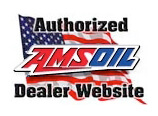31 May Is Diesel Dead in America?
Despite the recent black eye to the industry, a well maintained diesel still offers tremendous benefits.
A properly maintained diesel offers benefits that make diesel a viable option for most of us. Plus, automakers are continuing to roll out diesel options, including the Chevrolet* Cruze* and Colorado*; Jeep* Wrangler* and Cherokee*; Ram* EcoDiesel*; and a variety of Audi*, BMW* and Mercedes-Benz* vehicles. Even Ford* is testing a smaller diesel engine in its popular F150*.
Due largely to Environmental Protection Agency (EPA) mandates and advances in technology, automakers started building diesel engines that produced far less emissions. To meet 2002 emissions standards, most engine manufacturers introduced exhaust gas recirculation (EGR) to reduce NOx emissions. Although EGR engines reduce emissions, they run hotter and introduce higher levels of soot into the oil, increasing wear and oil viscosity.
The diesel landscape evolved again in 2007 when the latest round of emissions standards took effect. Diesel particulate filters (DPF) were incorporated into all model-year 2007 and newer American diesel engines. A DPF is a honey-comb-like filter positioned downstream from the exhaust manifold that catches soot and prevents it from entering the atmosphere.
As soot accumulates through normal driving, the DPF begins to plug and must be regenerated. Most emissions-compliant turbodiesel pickups clear the DPF by spraying raw diesel fuel into the cylinder on the exhaust stroke after combustion occurs. The unburnt fuel travels down the exhaust stream until it reaches the DPF, where it combines with soot and burns. Since fuel injected on the exhaust stroke does not combust, it tends to wash past the rings and into the crankcase, diluting the oil. That’s a pretty big issue considering diesel fuel and oil readily mix, resulting in reduced oil viscosity, which compromises wear protection.
Selective catalytic reduction (SCR) entered the fray around 2010. SCR systems inject diesel exhaust fluid (DEF) into the exhaust stream, where it reacts with a catalyst to convert NOx emissions into nitrogen gas and oxygen. You’ve probably seen jugs of DEF at auto parts stores and retailers in your area.
Diesel oxidation catalysts (DOCs) are another system that gained popularity around 2010. They consist of a flow-through honeycomb structure coated with a precious-metal catalyst. As hot diesel exhaust flows through the honeycomb (or substrate), the precious  metal coating causes a catalytic reaction that breaks down pollutants and reduces emissions.
metal coating causes a catalytic reaction that breaks down pollutants and reduces emissions.
Diesel oil plays a vital role in the performance and longevity of diesel exhaust treatment devices. Reducing oil consumption is critical. Oil consumption is somewhat like water evaporating on a hot day. Just like the heat of the sun lifts water molecules out of a container of water and into the air, high engine heat can lift the light, unstable molecules out of conventional oil, causing the oil level to drop. Where does the oil go? It can form harmful deposits on engine parts, including the EGR valve, which negatively affects the EGR system’s ability to function. Heavy deposits will eventually clog the DPF and DOC systems, reducing their effectiveness or service life, requiring either cleaning or replacement.
The exhaust treatment device itself can also negatively affect oil. As mentioned, engines with EGR systems can suffer increased soot and acids, which compromises wear protection. These engines require robust oils formulated with advanced additives that help prevent soot from agglomerating into larger particles that increase oil viscosity and cause engine wear. Fuel dilution in engines equipped with a DPF can invite increased risk of engine wear. In these cases, it’s important to use oil that naturally resists viscosity loss to maintain a strong lubricating film on parts for superior wear protection.
AMSOIL synthetic diesel oils and European Car Formula Synthetic Motor Oil feature advanced formulations designed to maximize the life of exhaust treatment devices while protecting against wear. They help diesel engines deliver the power, torque and longevity we’ve come to love from our diesel vehicles.

